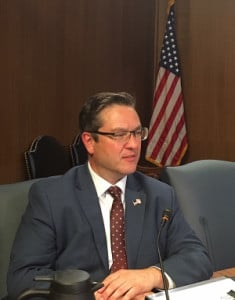TedTalk-style presentation for education on Social Emotional Learning
Description
Vocal Characteristics
Language
EnglishVoice Age
Middle Aged (35-54)Accents
North American (General)Transcript
Note: Transcripts are generated using speech recognition software and may contain errors.
consider students in the seventh grade language arts class. They're studying the Outsiders, which is a young adult novel by S. E. Hinton, who was then a teenager when she wrote it 50 years ago. What perhaps is typical about a lesson such as this is the teacher going through discussions with students analyzing the setting plots, characters and that type of thing. What might not be typical, though, is looking deeply into how the characters react to each other's differences as individuals. And as a group, the teacher asked students to put themselves into the shoes of the different characters. This lesson calls for empathy, empathy and respect for different backgrounds and viewpoints our themes that appear throughout social and emotional learning. But nowhere are they more prominent than in the S E. L competency. Social awareness. A person who is socially aware understands the thoughts, feelings and perspectives of other individuals and groups by being mindful and respectful of differences. The outsiders, for example, we see two groups from different socio economic backgrounds disrespecting and harming one another specifically because of their differences. The young people in the novel not only lack empathy, they condemn those within the group for trying to connect with others. They actually lobby against empathy. But we hope our students learn from what their teachers can draw from. A lesson like this is how to develop understanding of what it means to bring perspective to a variety of social settings and social circumstances. Being socially aware means recognizing the importance of mutual respect when viewpoints differ. Combined with the other four competencies of social and emotional learning. Social awareness help students develop the understanding, strategies and skills to support a positive sense of self, promote respectful relationships, recognize and manage their own emotions and make responsible decisions. The seventh grade classroom lesson on empathy and respect for differences is just one example of how educators in the Westfield public school system incorporates social awareness into everyday learning. In the primary grades, for example, students that recess are engaged in positive activities that promote understanding and acceptance of one another. At the intermediate level, students are encouraged to join other lunch tables to get to know students they might not know otherwise. At the high school, student cheerleaders promote a daily message of tolerance and respect while helping younger schoolmates navigate not only the physical space of the hallways that are new to them, but their feelings about being there as well developing social awareness among our students begins the moment teachers greets students on that first day of school for pre kindergarten or kindergarten. It continues throughout the years as they share the learning experiences of age appropriate books, which feature themes of kindness and friendship. It's forging identity through literature, and it's very much a part of our curriculum as our students emotional and social skills mature. They learn together about different cultures and customs, eventually tackling the complex topics of racism, bigotry and intolerance. But social awareness is not just taught through curriculum. Our teachers, guidance counselors, power professionals and other district employees model social awareness through common language and behaviors that foster a culture of mutual respect and empathy. Our hope is that by the time our students say farewell a graduation, they share a particular sense of pride, knowing that while forever linked as a single graduating class, it is their respect for their own different backgrounds and viewpoints that will help them continue to thrive as learners and leaders in college and in their careers.
Tags
Host/Interviewer, Interviewer, Motivational Speaker, Narrator, Professor, Storyteller, Teacher, Therapist, Instructor, TV Host, Presenter, Authentic, Authoritative, Calming, Conversational, Genuine, Informative, Intellectual, Knowledgeable, Narrator, Professional, Professorial, Serious, Sincere, Sophisticated, Technical, Thoughtful, Trustworthy, Intelligent, North American (General)
